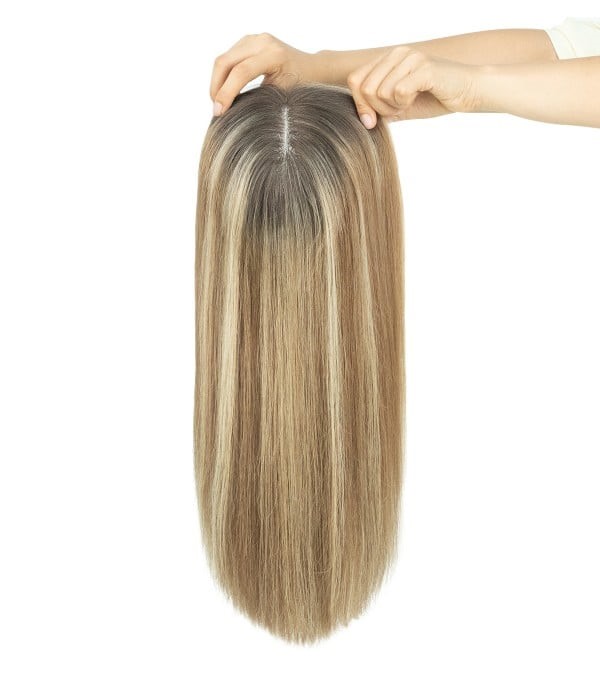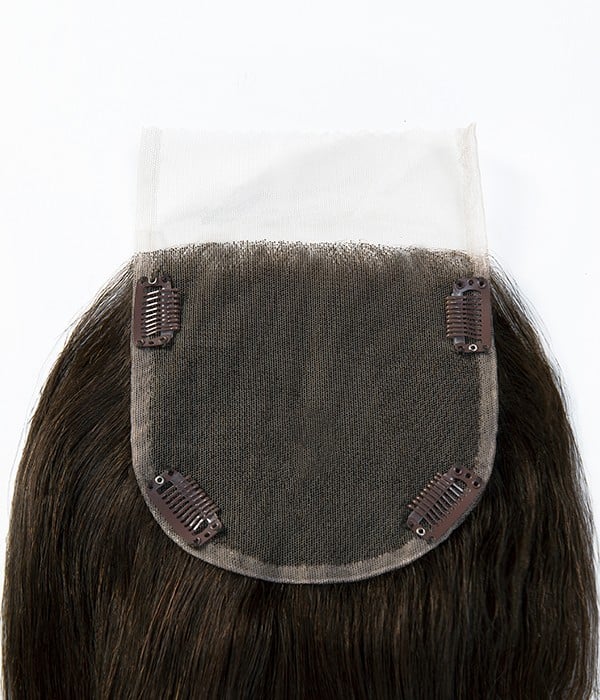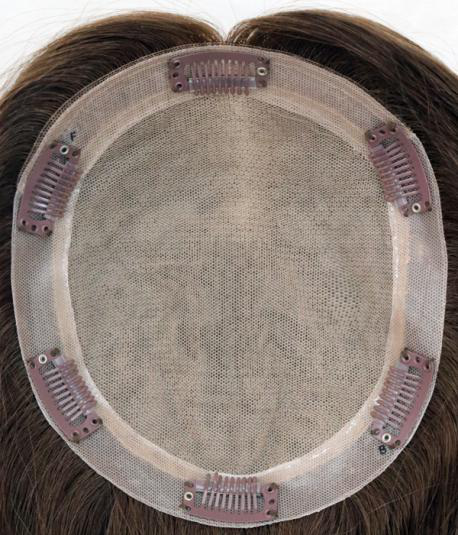Are you considering a hair topper but unsure which base material to choose? With so many options on the market, it can be overwhelming to make a decision. Two of the most popular base materials are lace and silk, but what are the differences between the two? In this post, we’ll break down the pros and cons of each base material to help you make an informed choice.
What is a Hair Topper?

Before we dive into the differences between lace and silk toppers, let’s define what a hair topper is. A hair topper is a hairpiece that is designed to be worn on the top of the head to cover areas of hair loss or thinning. Toppers come in a variety of sizes and shapes to match different hair loss patterns and styles.
Lace Toppers: Lightweight and Natural-Looking

Lace toppers are made with a sheer, lightweight material that mimics the look of natural hair and scalp. The fine, sheer lace allows for a natural-looking hairline and breathability, making them comfortable to wear in warm weather. Lace toppers are available in different types, including lace front and full lace toppers.
Lace front toppers feature a lace front that mimics a natural hairline, while the rest of the topper is made of a different material such as monofilament or polyurethane. The benefit of this type of topper is that it provides a natural-looking hairline, while the other materials used in the rest of the topper provide durability and a secure fit. Full lace toppers are made entirely of lace and provide the most natural-looking scalp appearance.
Pros:
- Natural-looking hairline
- Breathable
- Lightweight
- Provides a natural-looking scalp appearance
Cons:
- Requires more maintenance than other types of toppers
- May not be as durable as other types of toppers
Silk Toppers: Smooth and Durable

Silk toppers are made with a smooth, sleek material that has a more uniform texture than lace. The fine, soft silk material feels luxurious and silky to the touch. Silk toppers tend to be more durable than lace toppers, as they can withstand daily wear and tear. Silk toppers are available in different types, including silk top and full silk toppers.
Silk top toppers feature a layer of silk at the top of the base, which mimics a natural scalp appearance. The benefit of this type of topper is that it provides a natural-looking scalp appearance, while the rest of the topper is made of a different material such as monofilament or polyurethane. The silk layer also helps to hide the knots that attach the hair to the base, making it look more realistic. Full silk toppers are made entirely of silk and provide a uniform texture and smooth appearance.
Pros:
- Durable
- Easy to maintain
- Mimics natural scalp appearance
- Hides knots
Cons:
- May not provide the same level of breathability as lace toppers
- May be difficult to wear for beginners
Conclusion: Which is Better?
Both lace and silk toppers have their pros and cons, so the choice ultimately depends on your personal preferences and needs. If you prioritize a natural-looking hairline and breathability, a lace topper may be the best choice for you. If you prioritize durability and ease of maintenance, a silk topper may be the way to go. Whichever material you choose, make sure to care for your topper properly to ensure it lasts as long as possible.